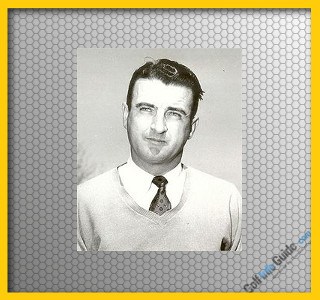
1. Jack Grout Golf Teacher: Nicklaus’ Coach Built Swing Ground Up
Beyond the technical details, Grout wanted students to find their own way around the swing. “He would give you the bare bones of a basic, then encourage you to figure out the details for yourself,” Nicklaus explained in his book, My Story. “He did that, first, so that you would use what came most naturally to you in learning and mastering the fundamental and, second, so that you would learn and remember the cause-and-effect factors through feel, not words.
“Rather than direct, he would suggest and guide.”
And that, Nicklaus suggests, was the secret to Grout’s success. “Jack always wanted you to do it your way, the most natural way you could,” Nicklaus said, “which made him the polar opposite of all those pros who want you to do it their way, or to adopt some ‘method’ they believe they've invented for the salvation of golfers everywhere.”

2. John Jacobs: Changing the Course of Golf Instruction
Teaching the game of golf is a serious challenge. Sure, millions of people love to play this game, but very few can play it well. Why is that? Well, simply put, golf is one of the hardest games man has ever invented. Despite the incredible advances in technology that have made their way into the game over the years, golf remains just as difficult as it has ever been. For the golf instructor, of course, that means the job of helping the average player improve is a tremendous challenge. Fortunately, there have been plenty of talented teachers step up to that challenge over the years, and few have been as successful as John Jacobs.
If you spend any amount of time following golf – whether online or on TV – you have probably seen advertisements at one point or another for the John Jacobs' Golf Schools. These golf schools are some of the most successful golf instruction ventures in the history of the game, with countless golfers having improved thanks to the instruction received over the years. Established all the way back in 1971, this business is still going strong today, operating in several locations. If you are serious about improving the way you play golf once and for all, a trip to a John Jacobs' Golf School is an investment worth close consideration.

3. Butch Harmon: Golf’s Most Respected Instructor
Classic Harmon-style tip: The ideal swing is both wide and short, or compact, meaning the arms stop moving when the shoulders stop rotating on the backswing. Harmon says many amateur golfers break this rule, so their left arm folds and/or the wrists cock too much, dipping the club past parallel. The golfer then casts the club out and across the target line on the downswing, causing a weak slice.
He suggests curing this by imagining the hands pushing away from the head on the backswing, maintaining as much distance (width) as possible between hands and head to the very top. As long as your arms and shoulders stay in sync, you’ll enjoy the benefits of a wider arc – more distance without the slice.
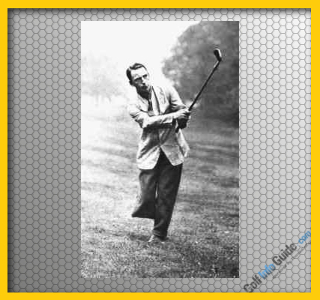
4. Ernest Jones: Personal Hardship Revealed Secrets of the Golf Swing
As a golfer, you are used to overcoming adversity on the course. Whether it is a bad bounce that puts your ball into a bunker, or a strong headwind that makes it impossible to reach the green in regulation, there are always challenges to be dealt with in golf. The best players are those who can take on these challenges and find a way to still shoot a good score. If you are looking for a game that provides you with smooth sailing each day, golf is not for you.
While the adversities that you will run into during the average round of golf might seem difficult to overcome, they are nothing when compared to the story of Ernest Jones. Jones was a golf professional from England in the early 20th century. A well-respected teacher and player, Jones is now a member of the World Golf Teachers Hall of Fame. However, his path to that honor was anything but easy. In 1915, during World War I, Jones was injured by a grenade and lost his right leg from just below the knee. After he had returned home, Jones went about the task of relearning how to play golf, and incredibly, he found that he was still able to play at a high level. In fact, in his first round without his leg, he shot an 83, which is a score that the majority of two-legged golfers would be proud to claim.

5. Dave Pelz Golf Teacher: Adding Science to the Art of the Short Game
Critics aside, no one challenges Pelz's status as a pioneer, his thoroughness or his passion for teaching golf. He's written numerous books, including the best-selling Short Game Bible, produced instructional DVDs, written regularly for GOLF Magazine since 1983, and appeared thousands of times on the Golf Channel.
In fact, one of Pelz's most memorable moments came while filming a Golf Channel segment at Wisconsin's Whistling Straits, on the eve of the 2004 PGA Championship. In the course of a demonstration, Pelz holed an astounding 206-foot putt, later declared by “Ripley's Believe It Or Not” as the longest putt ever made on TV.
A fitting distinction for a man who pushed the boundaries of golf well beyond their previous limits.
Famous students: Mickelson, Vijay Singh, Tom Kite, Payne Stewart, Lee Janzen, Colin Montgomerie, Mike Weir, Steve Elkington
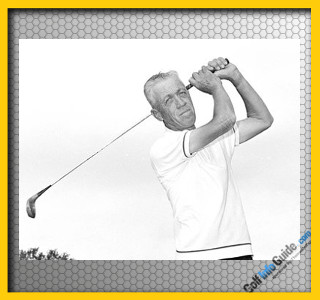
6. Harvey Penick Golf Teacher: Homespun Brilliance
Core philosophy: Penick didn’t advocate complicated swing-plane theories or introduce any revolutionary ideas. He absorbed everything he observed and recognized specific techniques used by good players. He taught all students as individuals, tailoring tried-and-true methods to their particular physique and talent.
Penick was a big proponent of developing feel and believed the mind played a central role in golf success. Hence, his famous advice to “take dead aim.”
“Once you address the ball,” Penick elaborated, “hitting it to the desired target must be the only thing in your life. Allow no negative thoughts, and focus on your goal.”
Classic Penick-style tip: Rather than overhauling his students’ swings, Penick preferred to use what he called “aspirins.” Not the same as quick-fix band-aids for the swing, Penick felt these pearls of wisdom could cure whatever underlying problem was causing the symptoms.
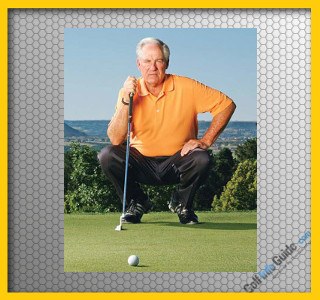
7. Dave Stockton: Great Player Turned Great Golf Teacher
Carving out any kind of career in the golf industry is an impressive accomplishment to be sure. Making it as a player is obviously one of the most-difficult things you can do in the game, as there are thousands of highly talented golfers around the world all competing for spots on the top tours. To succeed as a player requires not only hard work and talent, but also the mental strength to perform at your best when the pressure is on. There is certainly big money to be made in the world of professional golf, but that money does not come easy in any way.
While perhaps not quite as visible as professional golf, the world of golf instruction is also extremely competitive and difficult to enter. To succeed as a teacher requires an in-depth knowledge of golf technique, a love of the game, and an ability to connect with people in order to deliver your message. Some would say it is even harder to teach than it is to play, as teachers have to find ways to communicate properly with a wide-range of students – each of those students having his or her own unique traits, talents, and shortcomings. To be sure, teaching golf is not a career path that should be entered into lightly. One needs a great passion for the game as well as a love of helping other people succeed.
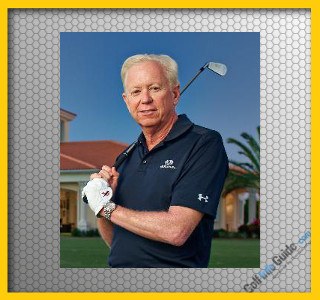
8. Jim McLean Golf Teacher: Driving Golfers Through Corridors of Success
McLean took Venturi’s lessons a step further, breaking the game down into four segments: the long game, the short game, course management, and the mental/emotional element. McLean believes a teacher’s first task is to determine the area in which a player is weakest, then go from there.
As for the X-Factor, the concept has occasionally come under fire. McLean defends his best-known principle, saying much of the criticism is leveled by teachers who don’t properly understand it.
In a broad sense, the X-Factor has been interpreted as advocating an intentional restricting of hip rotation on the backswing, with maximum shoulder turn to create the widest possible gap between the two. McClean insists that’s not necessarily the case.
His studies have shown that the average X-Factor among tour pros is 40-50°, which may be achieved with a huge (unrestricted) hip turn provided the shoulders make a big move, too. For example, a 100° shoulder turn paired with 60° of hip rotation – a very large amount — equals an X-Factor of 40.

9. Eddie Merrins Pro Golfer: The “Little Pro” with a Big Idea
One of the most notable teaching professionals of all time is Eddie Merrins. Merrins, who has been long known as the 'Little Pro' due to his diminutive size, has built a legendary career as a club professional, having held the title of Head Professional at the prestigious Bel-Air Country Club in Los Angeles for almost 40 years. Merrins has taught a wide range of players throughout his career, including many celebrity members of Bel-Air. Merrins is respected throughout the game at all levels, and his advice is valued by anyone lucky enough to receive it. In addition to his noted career at Bel-Air, Merrins also served as the highly successful coach of the UCLA Men's Golf Team, which won the 1988 National Championship under his leadership.
The 'big idea' mentioned in the title relates to Merrins main teaching point – that golfers should 'swing the handle', rather than the club head. This is an idea that runs counter to what is taught by many other pros around the world. Many teaching pros tell their students to focus on the club head itself, believing that it should be the focal point since it is the part of the club that will actually strike the ball. Merrins takes a different approach, however, and it has obviously led him to a tremendous career. By instructing players to 'swing the handle', Merrins has become one of the top teaching professionals in the history of the game.
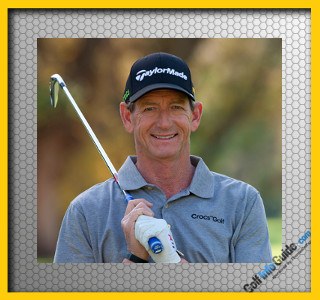
10. Hank Haney Golf Teacher: Swing Renovator to the Stars
Famous students: Tiger Woods, Mark O’Meara, plus more than 200 pros on worldwide tours
Core philosophy: Haney focuses intently on swing plane, which is evident in his work with Woods.
The most obvious difference in Woods’ swing pre- and post-Haney was a more “rounded” appearance, with the club shaft on a flatter (more horizontal) plane than Woods displayed under Harmon. Rather than re-routing the club to begin the downswing – which often shows up in a slight backward or forward movement of the hands at the top — Haney prefers his students to swing the arms on the exact same path coming down as going up.
Haney’s theory shouldn’t be confused with the “one-plane swing” espoused by Jim Hardy, another of his mentors. While the one-plane swing finds the left arm matching the tilt of the shoulders, Haney’s students may exhibit a two-plane motion, where the left arm is more vertical than the shoulders. He simply preaches swinging the club back and down on the same plane, wherever it falls.
Classic Haney-style tip: It’s possible to have the club’s shaft on plane with a clubface that’s not square to the target line. Ideally, the back of the left wrist is flat and perfectly aligned with the clubface at the top of your backswing.





